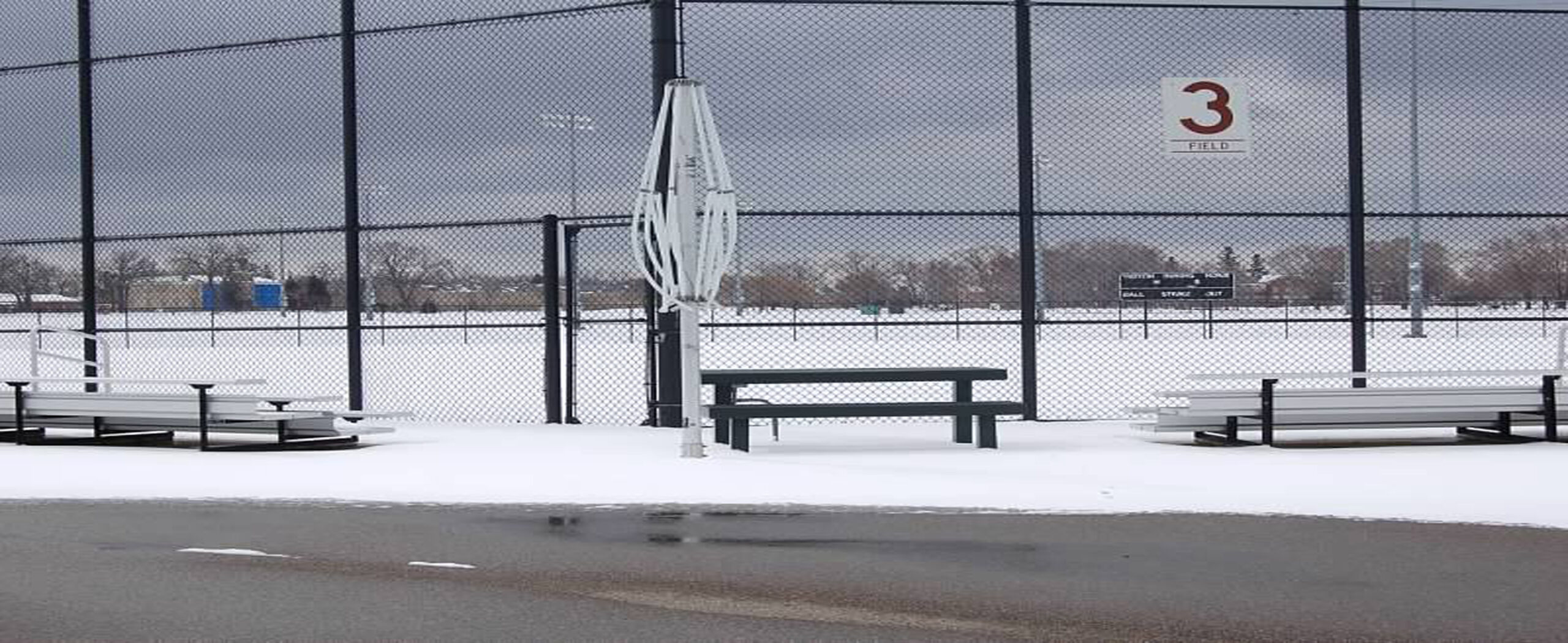Cancelation of meets, games, and matches have plagued spring sports everywhere
A new record was broken, but not the kind of record us Minnesotans want to break. The snow would not stop falling. April was the snowiest month recorded in Duluth as they reached 51.0 inches.
Even worse, the snow in May wouldn’t stop. May 10 there was a sprinkling of snow and three days later the forecast was 90 degrees. Unheard of weather like this has made the spring sport season practically impossible. With daily activities becoming a struggle to plan, the athletic directors have been turned upside down trying to figure when, where, and who can play.
Thurow has had to deal with most of the scheduling issues. The weather, so far, has cut most season playing times in half creating a big problem with jamming games, matches and meets already busy weeks in order to still get a full season.
Thurow says the hardest part is remembering they are still student athletes and right now athletics isn’t the priority over academics but it is becoming more difficult as the end of school is approaching quickly. Even for some home games played at places such as Fort Snelling, students are having to get out of class early to ensure they finish in time for the next game scheduled there.
For softball and baseball there are even more problems. Varsity is first priority to the athletic directors, then JV and work your way down. Thurow says the hardest part is finding umpires and fields for the middle school teams. After varsity, junior varsity, and the ninth grade teams, not to mention the little league games and old rec softball teams there is slim to no facilities left that are willing to accommodate for the middle schools.
“We’re trying to make everyone happy,” said Athletic Director Homar Ramirez. “We’re trying to make sure kids get to play games, not destroy fields [and still] respecting the fact that you guys are students.”
Another side effect from cramming all these games into a small time frame is that parents are missing more games. The game times are being moved up just enough so if a parent were to usually catch the second half of a game after work, it is virtually impossible to anymore. Changing start times, for example, from 4:30 to 3:45 has been the source of this problem.
The baseball team is one of the teams suffering the most. The crunching has made pitching a problem. Since a baseball pitcher can’t pitch more than about two games a week, and the weeks to come will be packed with game after game, teams who are deep and have many pitchers are going to have a much greater advantage than they usually would.
“All the games will still be played but there will be more pitchers throwing more innings and less outings for each individual pitcher,” Ramirez said.
Every school in Minnesota is having this problem which makes it even harder to find space to practice.
“We have spent some time in the classroom learning the rules of the game,” said girls’ golf head coach Kelsey Walt, “also with going to golf domes, along with every other school in the city, to try to get some full swings in.”
Fortunately the lacrosse team has had the privilege of using the upper school’s gym.
“We were very fortunate to have painted a girls’ lacrosse arc in the NC gym last summer,” said girls’ lacrosse head coach Todd Wadsworth. “Without that, it would have been impossible to practice effectively these past few weeks. Mr. Ramirez really helped us out by granting that request.”
Getting creative is the name of the game. When it comes to figuring out when and where to practice track has had to resort to working on hurdles in the multi-purpose room and the boys tennis team has been seen shoveling off their courts.
Since Minnehaha owns tennis courts we are able to dictate when matches are played, which has helped with the scheduling conflicts. On the other hand golf, softball, and baseball all have to wait and see.
“If we had our own facilities I think we would be able to accommodate some of the inconveniences better,” said Ramirez. “Lacrosse is inside a gym and that is never a good place for them to be.”
Having our own fields would lessen scheduling conflicts and coaches would figure out how to use fields without destroying them.
“We have wanted field turf in the past and this spring has helped us realize more so that we need field turf,” said Ramirez. “And we would also like to have our own baseball and softball fields.”
Although that doesn’t look like an option in the near future, this season has changed the priority to getting more and better athletic facilities.

